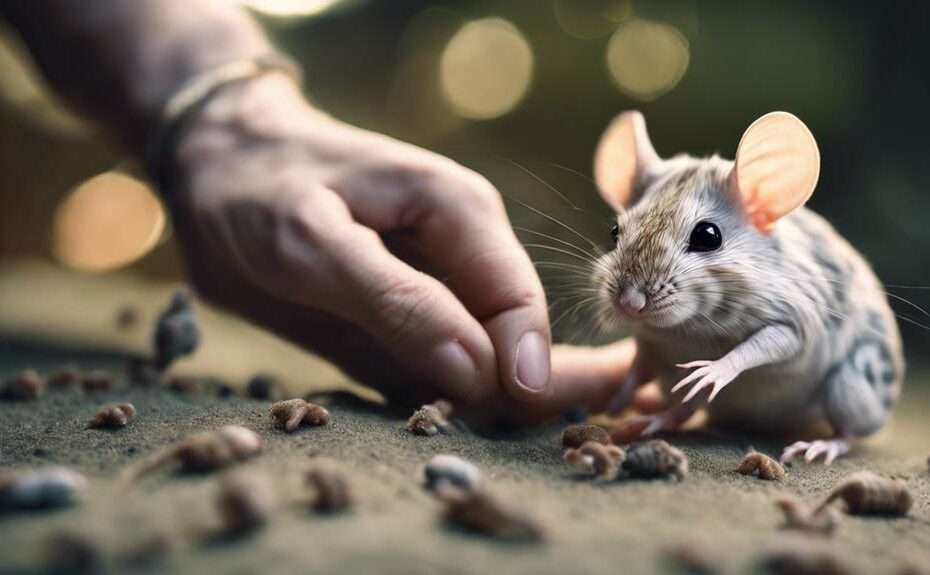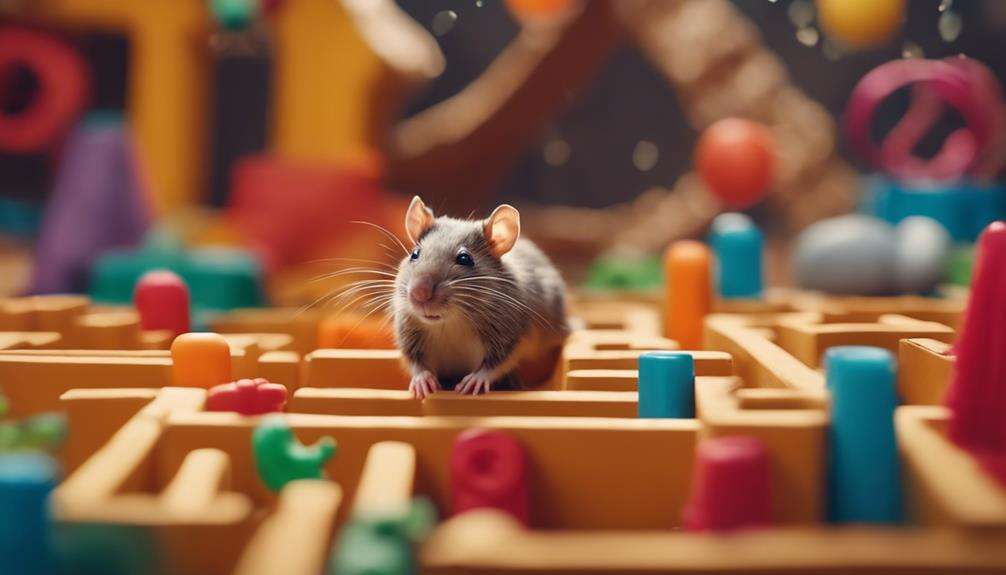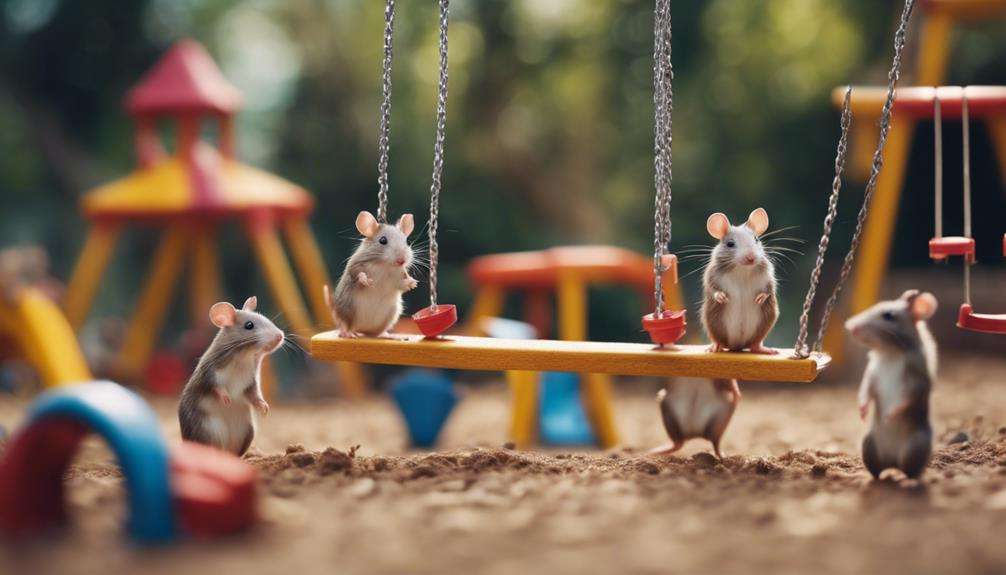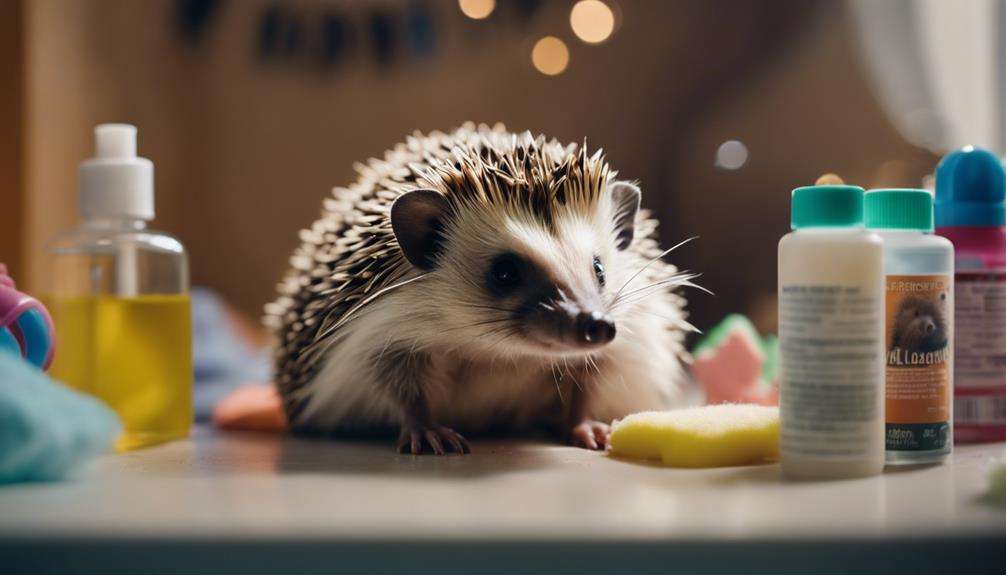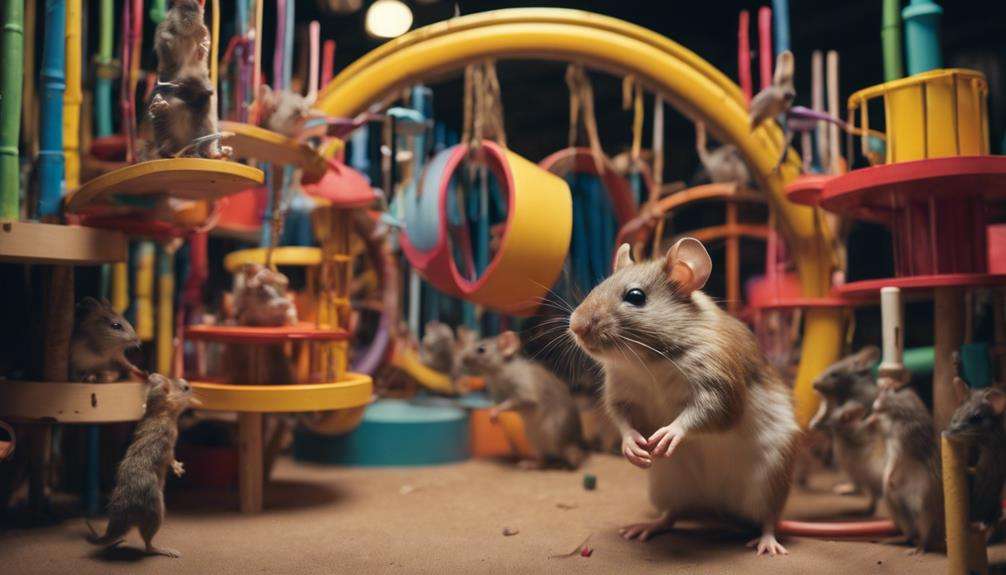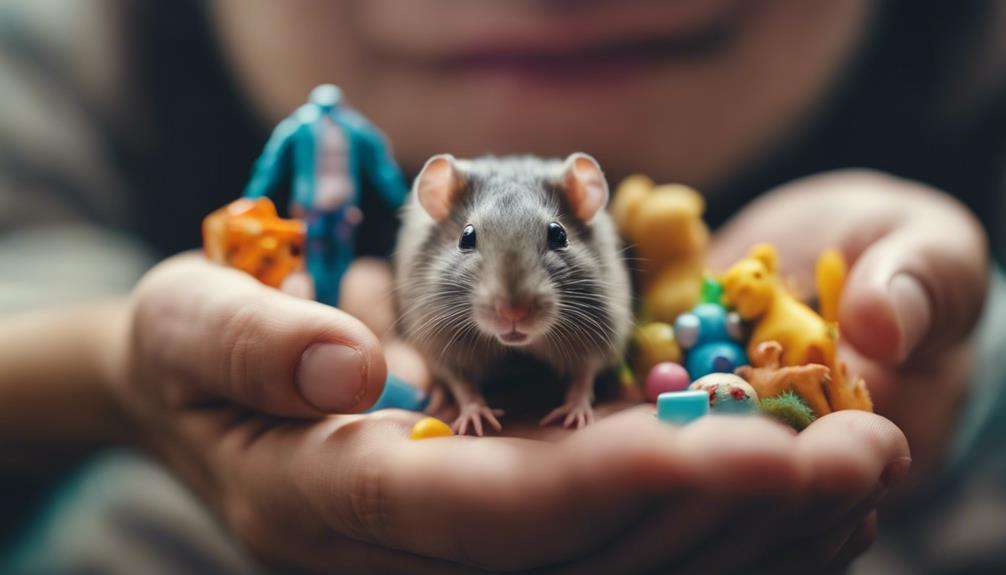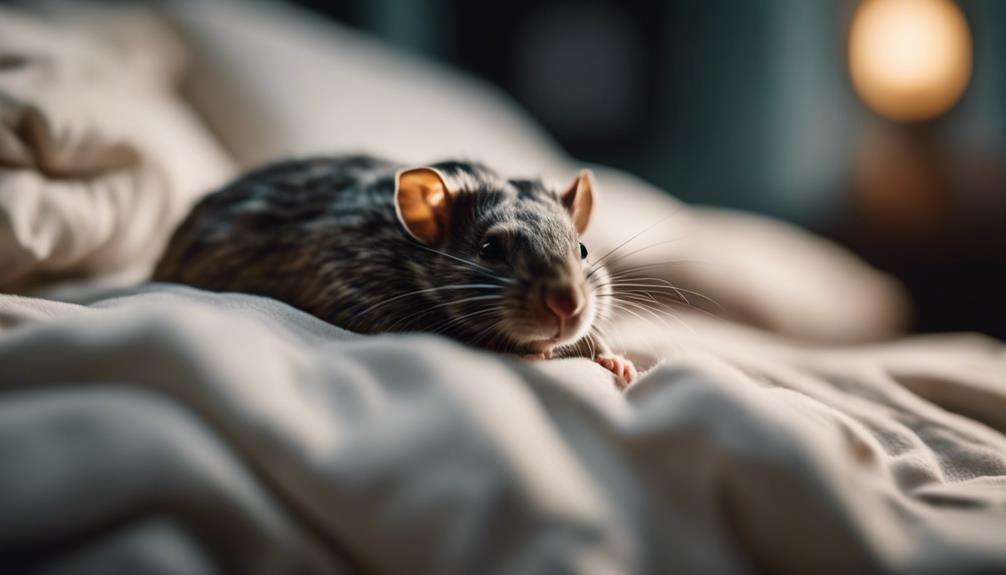If you're seeking some unique companions, consider the world of lesser-known rodent species for a touch of the unconventional.
From the acrobatic Jerboa to the oddly fascinating Naked Mole Rat, these creatures offer a glimpse into a quirky pet-owning experience.
Each species brings its own set of intriguing characteristics and behaviors, making them worth exploring for those looking to add a dash of uniqueness to their lives.
Key Takeaways
- Jerboas: Quirky pets with unique adaptations like bipedal movement and large ears for heat dissipation.
- Naked Mole Rats: Unconventional pets with fascinating traits like cancer resistance and eusocial behavior.
- Patagonian Maras: Social and monogamous pets that communicate through vocalizations and exhibit high parental care.
- African Pygmy Dormice: Delightful exotic pets from Africa, thrive in pairs, have arboreal habits, and diverse diets.
Jerboa: The Desert Acrobat
In the arid landscapes of North Africa, the Middle East, and Central Asia, the Jerboa emerges as a fascinating desert acrobat with its remarkable kangaroo-like hopping ability and distinctive adaptations. These small, bipedal rodents, known for their long hind legs, are perfectly adapted to their harsh desert environments. Jerboas have evolved to be nocturnal to avoid the scorching heat of the day, emerging under the cover of darkness to feed on seeds, insects, and plant material.
One of the most striking features of Jerboas is their large ears, which serve the dual purpose of dissipating heat to regulate body temperature and detecting predators in the vast desert expanse. Their hopping motion allows them to cover great distances quickly, an essential skill for evading threats in the open terrain. Jerboas' unique characteristics and behaviors make them elusive creatures that have mastered the art of survival in some of the world's most challenging environments.
Naked Mole Rat: Oddly Fascinating Creatures
The Naked Mole Rat, characterized by its unusual features and eusocial behavior, stands out as a fascinating subject in the realm of rodent biology.
These naked mole rats live in underground colonies, displaying eusocial behavior similar to certain insect societies. Remarkably, they're resistant to cancer, insensitive to certain irritants, and possess the extraordinary ability to thrive in low-oxygen environments.
Their eusocial structure includes a queen, workers, and soldiers, resembling the social hierarchy seen in ants and bees. With a lifespan of up to 30 years, naked mole rats defy the typical longevity expectations for small mammals.
These rodents are adept burrowers, using their incisors to dig complex tunnel systems underground. Their unique adaptations and behaviors make naked mole rats intriguing subjects for scientific study and observation.
Patagonian Mara: The Giant Hare
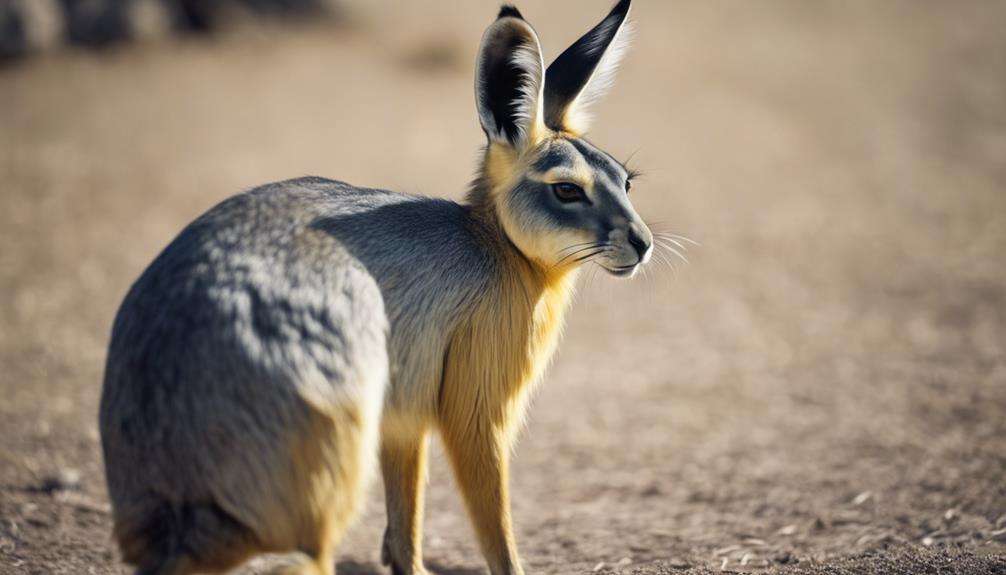
Uncover the remarkable features and social behaviors of the Patagonian Mara, a giant rodent reminiscent of a blend between a rabbit and a deer. Patagonian Maras are fascinating creatures for those interested in large rodents, as they exhibit unique characteristics that set them apart from other species.
- Herbivorous Diet: Patagonian Maras primarily feed on grasses, herbs, and various vegetation found in their natural habitat of the Patagonian region in Argentina. Their herbivorous diet plays a crucial role in their ecosystem as they help maintain the balance of plant life in the grasslands and scrublands they inhabit.
- Social Animals: These large rodents aren't solitary creatures. They live in groups and are known for their social interactions. Patagonian Maras communicate through vocalizations and body language, forming intricate social structures within their communities.
- Monogamous Pair Bonds: Patagonian Maras are monogamous animals, forming strong pair bonds with their mates. Both parents actively participate in caring for their young, demonstrating a high level of parental investment in their offspring.
African Pygmy Dormouse: Tiny Cuties
Patagonian Maras exhibit fascinating social behaviors, and similarly, the African Pygmy Dormouse showcases intriguing characteristics as tiny cuties native to sub-Saharan Africa. These adorable rodents are nocturnal and arboreal, preferring to spend their time in trees and bushes. One of their unique features is their prehensile tail, aiding in balance and climbing as they navigate their arboreal habitat.
Being social creatures, African Pygmy Dormice thrive when kept in pairs or small groups, enjoying the company of their kind. As pets, they offer an interesting dynamic with their need for social interaction. Their diet is diverse, consisting of insects, fruits, seeds, and nectar, providing a variety of feeding options for their owners to explore.
Considered delightful additions to the world of exotic pets, African Pygmy Dormice bring a touch of charm and curiosity with their small size and intriguing behaviors. If you're looking for a unique and enchanting pet, these tiny cuties might just be the perfect choice for you.
Brazilian Agouti: Exotic Foragers
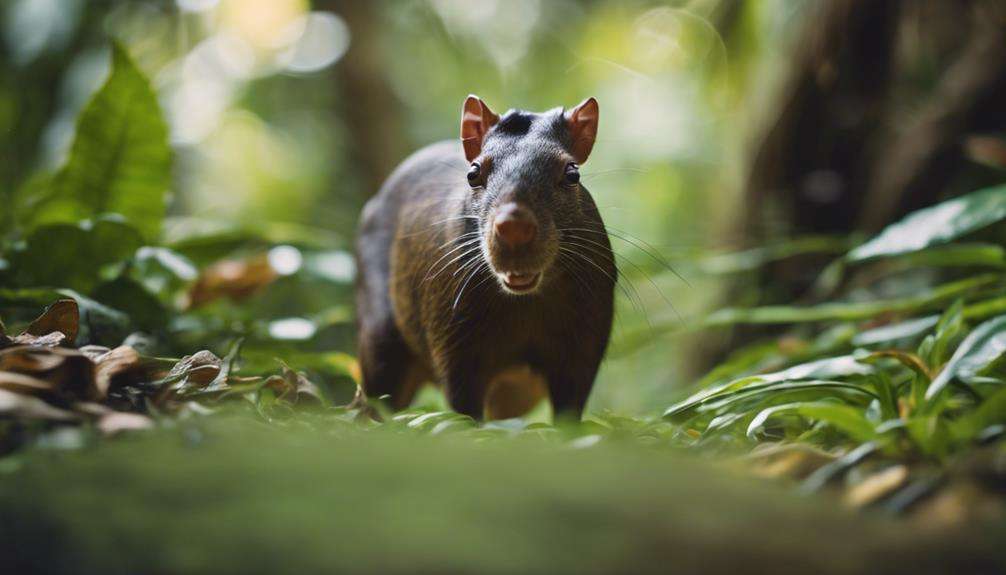
Exhibiting remarkable foraging skills and distinctive elongated snouts, the Brazilian Agouti is a large rodent native to South America. These unique creatures are adept foragers, using their strong claws and sharp incisors to dig for roots, fruits, and seeds in the dense forests they inhabit.
Here are some fascinating facts about Brazilian agoutis:
- Seed Dispersal: Brazilian agoutis play a vital role in seed dispersal and forest regeneration. By burying and forgetting seeds while foraging, they help in the growth of new plants, contributing to the biodiversity of their ecosystem.
- Social Animals: Brazilian agoutis are social creatures that live in small family groups for protection and social interaction. They communicate through vocalizations and scent markings, displaying complex social behaviors within their groups.
- Fur Coloration: Their fur coloration ranges from reddish-brown to gray, aiding in camouflage within the dense forest environment where they reside. This adaptation helps them evade predators and blend seamlessly into their surroundings.
Frequently Asked Questions
What Is the Most Playful Rodent?
The most playful rodent is the Mongolian gerbil. These energetic pets are highly interactive, with playful personalities and curious behavior. They make active companions with social creatures known for their lively interactions and spirited playtime antics.
What Are Small Rodent Exotic Pets?
Small rodent exotic pets exhibit unique behaviors, unusual habitats, exotic diets, interesting colors, rare breeds, quirky personalities, uncommon characteristics, endearing quirks, fascinating adaptations, and intriguing habits. They bring diversity and charm to the world of pet ownership.
What Is the Easiest Rodent to Have as a Pet?
The easiest rodent to have as a pet is the gerbil. Low maintenance, beginner-friendly, and social, gerbils are interactive, budget-friendly, and adaptable. They make great apartment pets, suitable for children, as they are quiet and independent.
What's the Cutest Rodent?
When looking for the cutest rodent, consider the tiny hamsters with their playful antics and fluffy chinchillas known for their soft fur. Adorable gerbils and curious guinea pigs also vie for the title. Choose wisely!
Conclusion
As you delve into the world of lesser-known rodent species, you'll uncover a diverse array of fascinating creatures waiting to be discovered.
From the agile Jerboa to the enigmatic Naked Mole Rat, each species offers a unique perspective on the wonders of the animal kingdom.
Embrace the opportunity to explore these quirky pets and witness the beauty of nature in its most unconventional forms.
Your journey into the realm of exotic rodents promises endless surprises and endless fascination.
